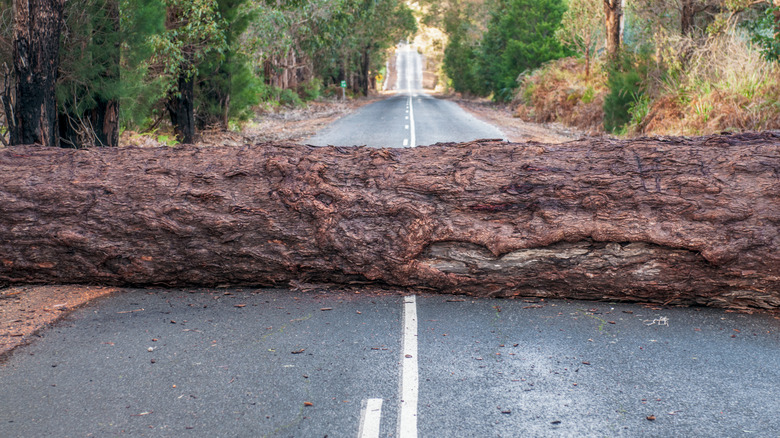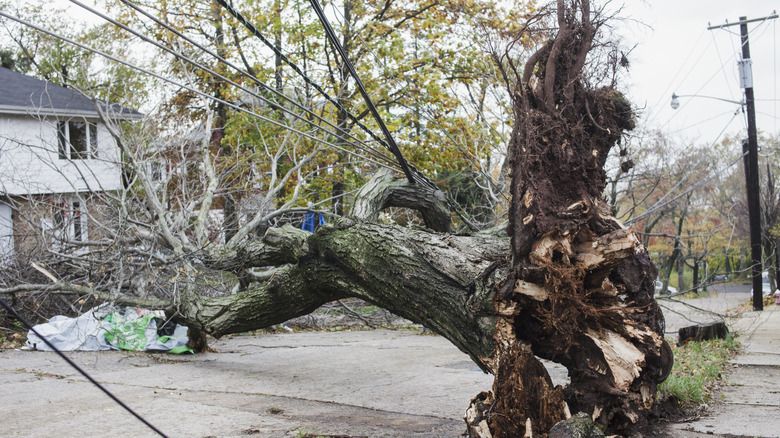Fallen Tree Laying In Your Street? Here's Who Is Responsible For Removing It
When a storm rolls into town, comforting your freaked-out dog after the power goes out is bad enough. But as the sun comes back out, the aftermath can be even more stressful when you spot a fallen tree laying in your street. Whether you live on a busy street or tucked away in a quiet cul-de-sac, it's worse and far more dangerous when downed power lines are tangled in the mix. Ice storms that finally do in an old diseased oak, heavy snow that snaps off a giant branch, or fierce winds that uproot entire trees can quickly bring traffic to a halt. Fortunately, in most neighborhoods, local governments or emergency response crews are responsible for handling the first wave of cleanup, especially when public roads are blocked or power lines are compromised.
Healthy trees felled purely by weather are usually considered an "act of God." Local municipal road departments, public works teams, and utility crews coordinate to clear hazards quickly so residents (and first responders) can safely pass through again. These efforts often start at major intersections and work their way out to lower traffic areas, meaning rural homeowners may find themselves waiting longer for help, especially for portions of trees that are left on their private property. Storm cleanup often becomes a shared process between public servants, residents, and even good Samaritans who know how to safely use a chainsaw.
However, not every fallen tree is the result of bad weather. Sometimes they give way under their own weight, weakened by age, rot, or disease. When fallen trees from private property have been poorly maintained, you may find yourself on the hook, especially if you ignored the risks.
Local crews will handle cleanup but liability depends on who owned the tree
Whether a tree has fallen as a result of extreme weather or something else, determining who is responsible for damaged tree removal usually depends on whose tree it was. Trees that are rooted in the public right-of-way, like those found in public parks or lining sidewalks, are usually the responsibility of local municipalities. But if you've got an old tree on your property that was visibly dead or decaying, some jurisdictions say that the liability shifts if it falls on a public road especially when you live in an urban area with only a few trees to monitor. You can still expect that your local municipality will handle the cleanup to get the road passable as quickly as possible. Unfortunately, unless you've reported the hazard potential, you should also expect to receive a bill for damage, removal, or disposal costs.
If you do notice a fallen tree laying in your street, whether it's yours or someone else's, keep yourself at a safe distance. Then, call your local authorities to report it. If you see downed power lines, do not approach them or attempt to remove the tree. Instead, call your utility company immediately. When a fallen tree was initially rooted on your private property, you should document the situation with photos in case your insurance company gets involved. Once the road is cleared, carefully inspect any remaining portions of your tree, especially if damaged limbs may cause hazards. You may also want to call a professional arborist for a consultation to prevent future incidents or for help removing a tree stump.

